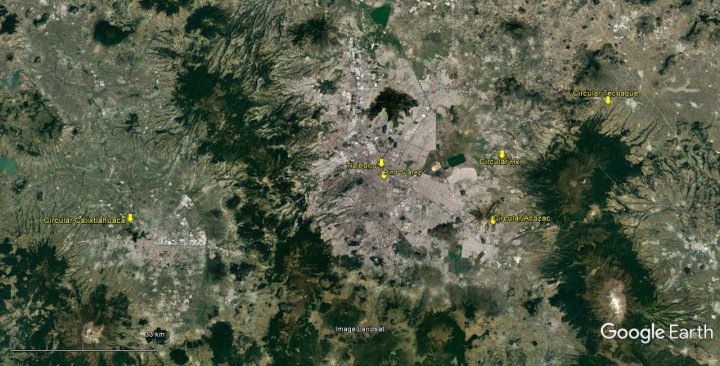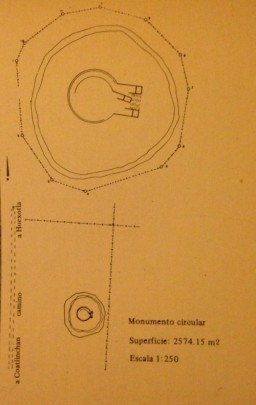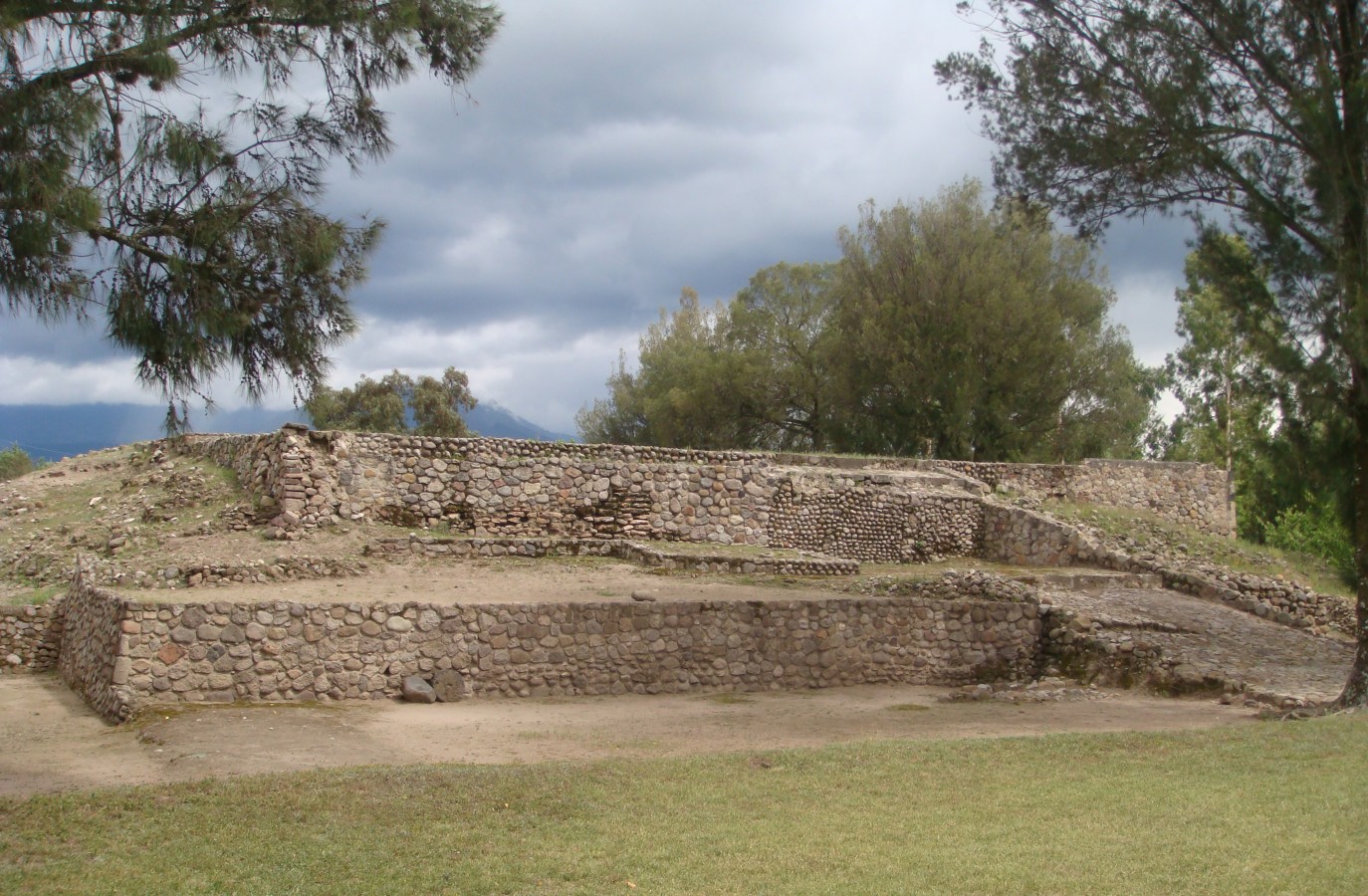Orientation and Astronomy
Crossing the San Bernardino River from the town of San Luis Huexotla and following a dirt road that leads to Coatlinchán, we come to the Circular Temple of Huexotla, which displays two stages of construction, as shown by the differences in alignment of its stairways. It is approximately 156 feet wide and 13 feet tall. The stairway, which is flanked by inclines, measures 6.5 feet by 33 feet and faces east. We can see another incline corresponding to the first stage of construction in the middle.
The astronomical alignment differs as regards other constructions within the pre-Hispanic settlement. During his explorations in Huexotla, Leopoldo Batres (1904) recorded changes in the alignment of various monuments and insisted on a hypothesis of overlapping sections. García and Díaz (1979-80) confirmed two stages of construction in the Circular Temple stairway. Based on pottery fragments, Teresa García (1987) dates the first stage to between 1150-1350 AD and the second to between 1350 and 1515 AD. Taking these dates into consideration, Ivan Šprajc proposes that the changes in alignment correspond to different astronomical references. The first stage, related to the evening star, faces towards the Tres Padres peak, which marks Venus’ northern limit. The second stage, referencing the Sun aligned with Cerro Petlécatl, coincides with the sunset on May 6 and August 7. The hypothesis regarding Venus is reinforced by the archeological material that Batres discovered in the temple: “fragments of an enormous clay idol wearing a headdress of five flowers placed horizontally on the forehead” (Batres, cited by Šprajc, 1998: 80). Moreover, “the shell pectorals, predominant motifs in pottery found in the surrounding area by Batres, confirm this association, which supports the hypothesis of Venusian orientation.”
We have been able to determine that the circular platforms in the central zone of Mesoamerica are oriented towards the east or, in the case of the Mayan zone, towards the west.
Furthermore, the temples were depicted in pottery and small “prototypes,” as well as in codices, besides being described in colonial documents, which tell us that they had conical thatched roofs.









